July 1, 2021
by Mikhail Elyashberg, Leading Researcher, ACD/Labs
Securamine H
Bryozoans belonging to the Flustridae family have been shown to be a rich source of structurally unique secondary metabolites. Hansen et al [1] examined the organic extract of Securiflustra securifrons. This resulted in the isolation of three new halogenated, hexacyclic indole-imidazole alkaloids, including securamine H(1), together with the previously known securamines C (2) and E (3).
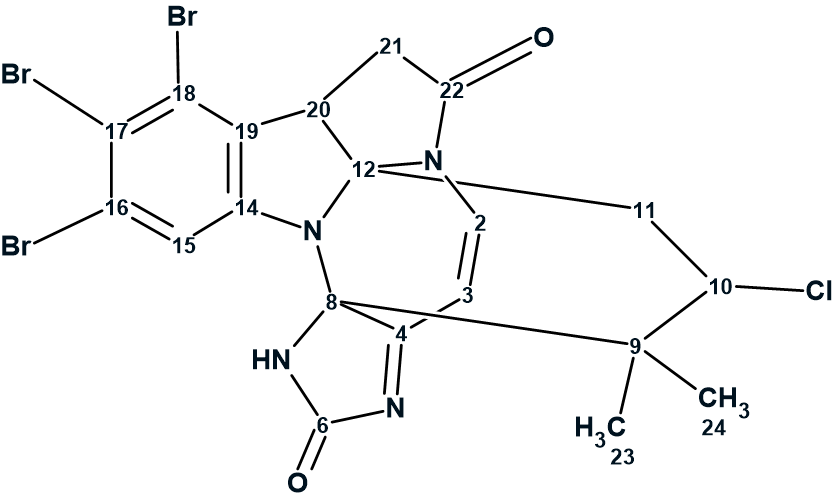
1
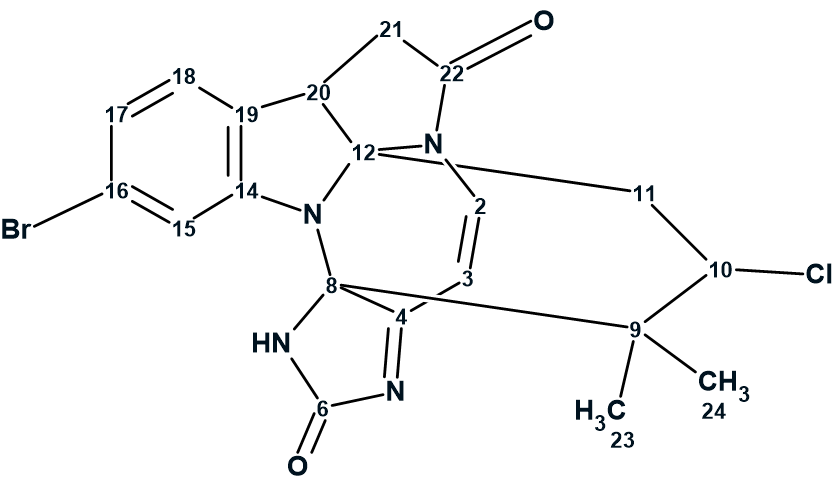
2
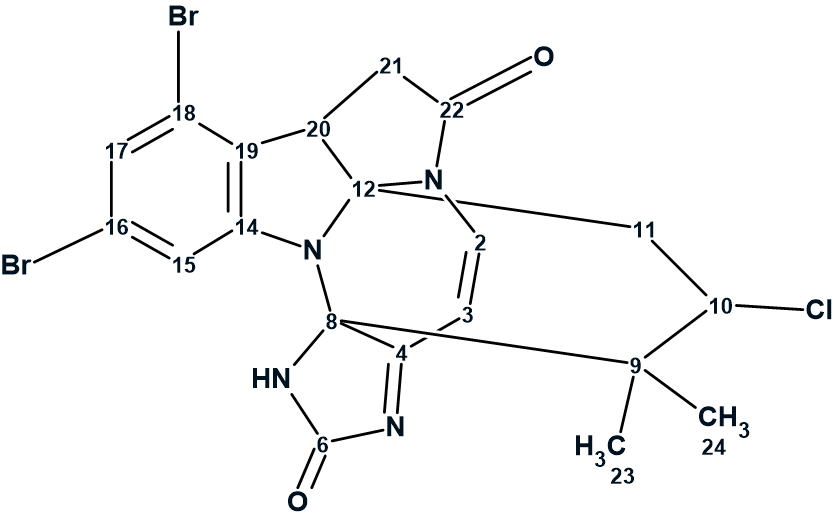
3
Securamine H was isolated as a light-yellow powder. The molecular formula was found to be C20H16Br3ClN4O2 by HR-ESI-MS, suggesting the presence of 13 degrees of unsaturation. The 1H and 13C NMR data of 1 indicated that it possessed the same hexacyclic moiety as structures 2 and 3 isolated and assigned earlier.
Based on the molecular formula, the assumption was made that the hexacyclic moiety of 1 was substituted with three bromines. As a result, the structure of securamine H was easily determined and confirmed by just ROESY data.
According to the molecular formula, securamine H could be a challenge for ACD/Structure Elucidator as the molecule contains four kinds of heteroatoms (N, O, Cl and Br, totally 10) and the ratio of skeletal to hydrogen atoms is ca. 1.5, that is, it is hydrogen deficient. In addition, only selected 2D NMR correlations were reported on the structure in the article [1]. It was therefore obvious from the onset that solving this problem without any assumptions would be difficult, if not impossible, using the very limited spectral information available. Therefore, we tried to determine what structural information taken from structures 2 and 3 would be sufficient to elucidate the structure of 1. The Molecular Connectivity Diagram (MCD) automatically created from the data presented in Table 1 is shown in Figure 1 (the MCD was slightly edited manually, adding jus the NH group).
Table 1. NMR spectroscopic data corresponding to key HMBC and COSY correlations.
| C/X Label |
δC | δC calc (HOSE) | XHn | δH | M(J) | COSY | H to C HMBC |
| C 2 | 136.000 | 136.200 | CH | 7.520 | d | 5.97 | C 12, C 4 |
| C 3 | 101.800 | 101.260 | CH | 5.970 | d | 7.52 | C 8 |
| C 4 | 187.100 | 185.320 | C | ||||
| C 6 | 166.800 | 166.260 | C | ||||
| C 8 | 85.600 | 85.410 | C | ||||
| C 9 | 44.300 | 43.760 | C | ||||
| C 10 | 59.000 | 58.390 | CH | 4.690 | u | 2.61 | |
| C 11 | 42.200 | 41.400 | CH2 | 2.610 | u | 4.69 | C 10 |
| C 12 | 88.000 | 85.890 | C | ||||
| C 14 | 146.700 | 136.100 | C | ||||
| C 15 | 115.100 | 139.880 | CH | 7.130 | s | C 17, C 16, C 19 |
|
| C 16 | 126.200 | 122.560 | C | ||||
| C 17 | 120.100 | 123.520 | C | ||||
| C 18 | 123.800 | 129.900 | C | ||||
| C 19 | 129.400 | 125.320 | C | ||||
| C 20 | 48.300 | 45.100 | CH | 3.720 | u | C 11, C 18, C 19, C 14 |
|
| C 21 | 32.900 | 33.920 | CH2 | 3.040 | u | ||
| C 21 | 32.900 | 33.920 | CH2 | 3.640 | u | C 12, C 19, C 22 |
|
| C 22 | 170.000 | 170.440 | C | ||||
| C 23 | 17.200 | 17.100 | CH3 | 1.360 | s | C 24, C 9, C 8 |
|
| C 24 | 21.200 | 20.950 | CH3 | 1.060 | s | C 9, C 10 |
|
| N 1 | N | ||||||
| N 2 | N | ||||||
| N 3 | NH | 7.040 | s | C 8, C 4 |
|||
| N 4 | N |
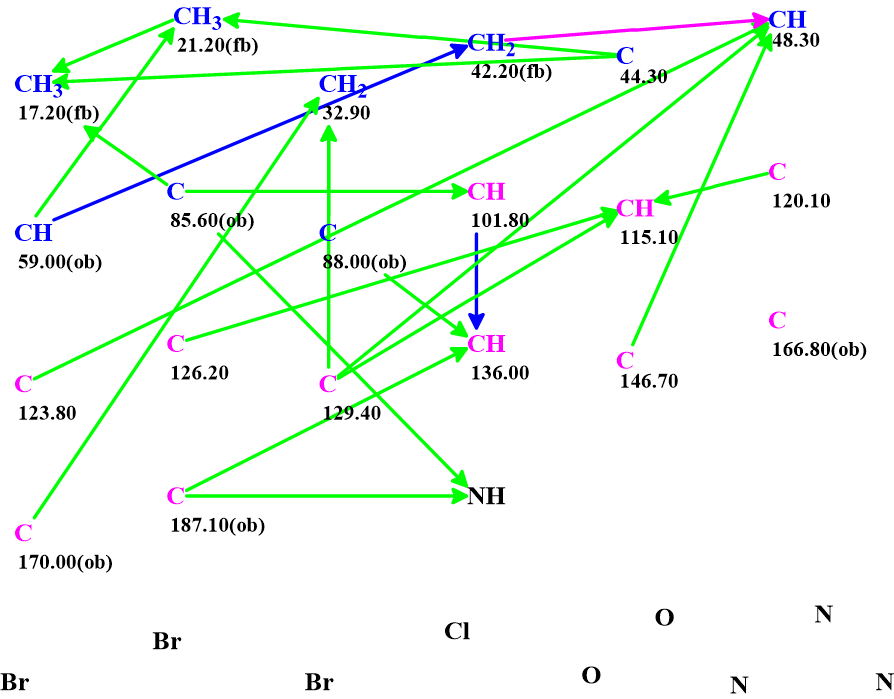
Figure 1. Initial MCD.
The first attempt to solve the problem was by manually defining an imidazol fragment. The corresponding MCD is shown in Figure 2.
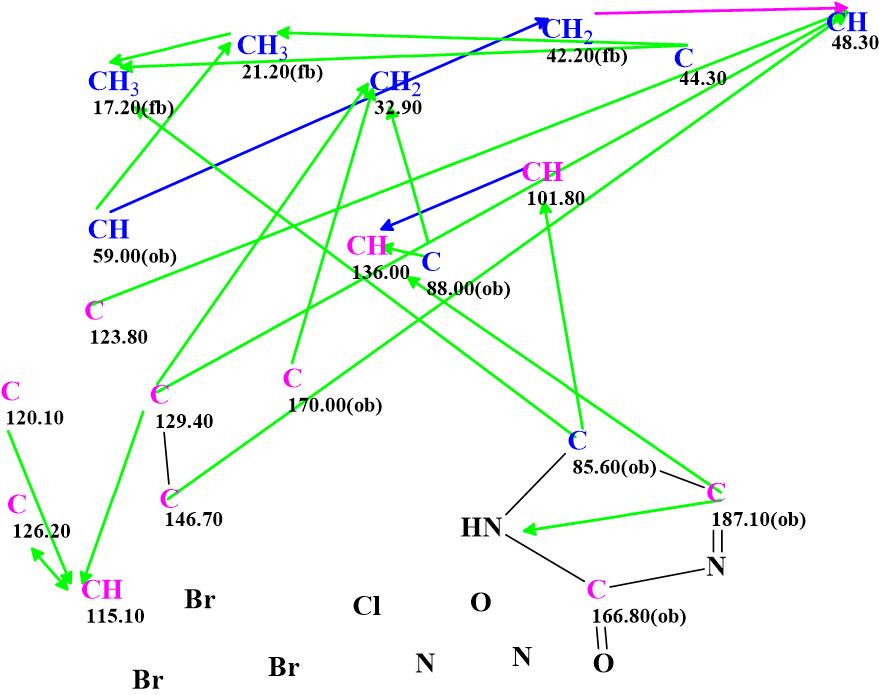
Figure 2. MCD containing manually drawn imidazol ring.
Structure generation was initiated from this MCD and it was stopped by the user after 3 h of CPU time. The program generated ca. 5.6 million structures and it was estimating that it will need an additional 41 h to finish. From this it was clear that at least one more fragment existing in structures 2 and 3 should be drawn in the MCD. As the atoms that are included into the 5-membered lactone ring can be easily identified in structures 2 and 3 this fragment was also manually defined (Figure 3).
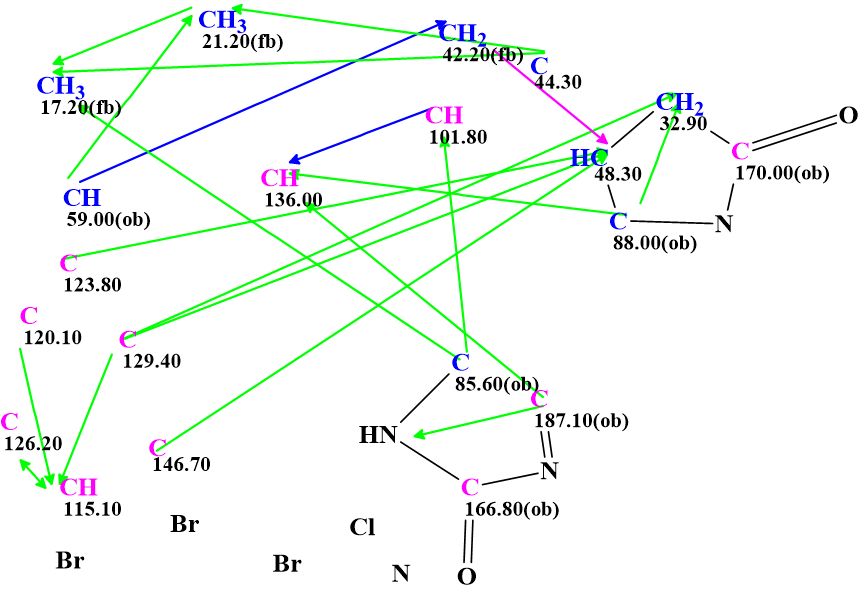
Figure 3. MCD containing two manually defined fragments.
Structure generation was initiated again and it was completed in 25 s with the following results k=12058 → (structural filtering) → 270 → (removal of duplicates) → 135. The 13C chemical shifts were predicted for the structures of the output file using the three methods (HOSE code, neural networks and incremental approaches) implemented into ACD/SE and the structures were ranked in descending order of average deviations of experimental 13C spectrum from predicted ones. The top four structures of the ranked file are shown in Figure 4.
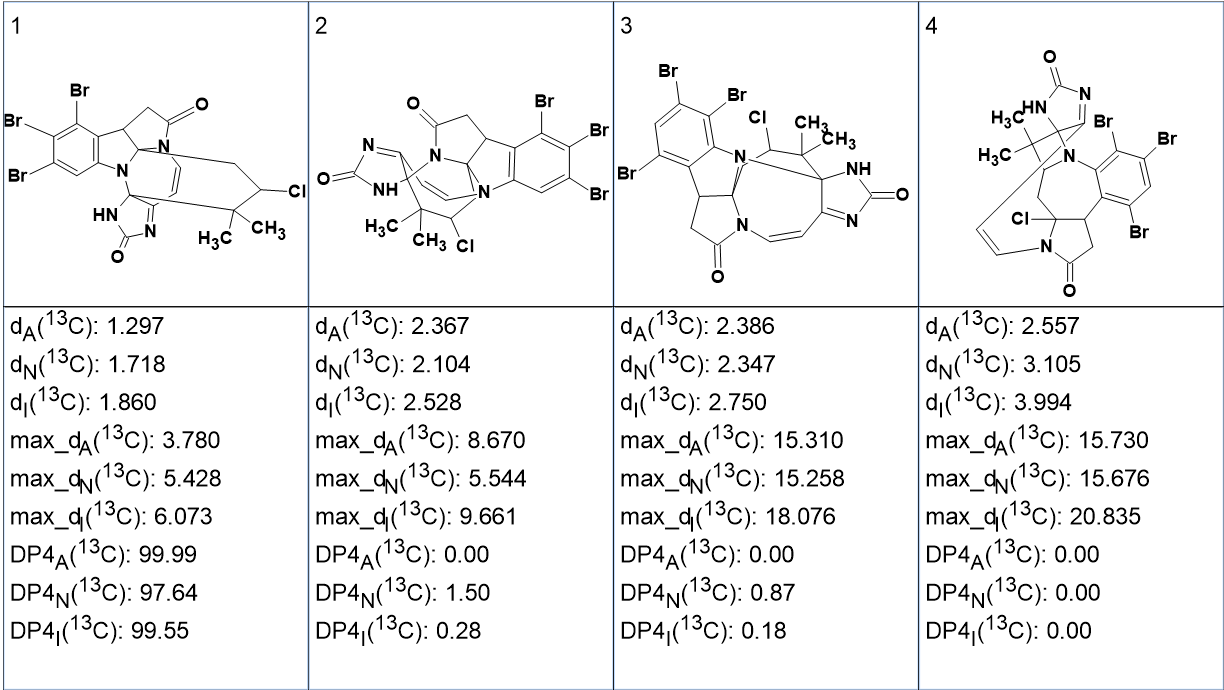
Figure 4. The top four structures of the ranked structural file.
We see that the best structure of the ranked file coincides with structure of securamine H reported by the authors [1] and its validity is confirmed by empirical DP4 probability calculations.
The described approach can be successfully applied in cases when NMR spectra of an unknown are close to ones acquired from compounds isolated from the same natural source and the common sub-fragments can be identified.
References
- K. Ø. Hansen, J. Isaksson, A. Bayer, J. A. Johansen, J. H. Andersen, E. Hansen. (2017). Securamine Derivatives from the Arctic Bryozoan Securiflustra securifrons. J. Nat. Prod., 80(12), 3276–3283.


